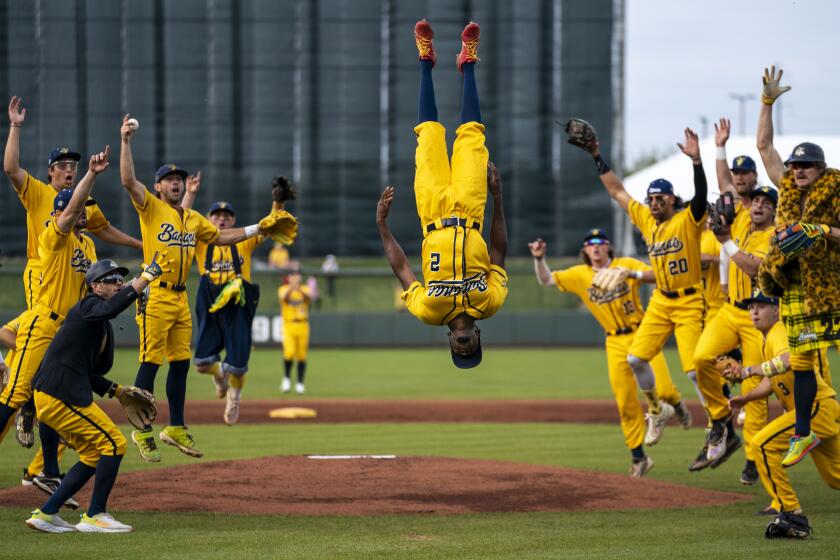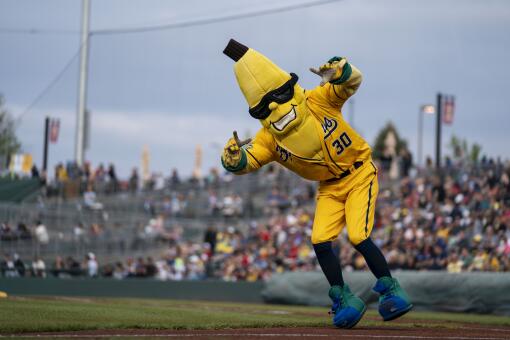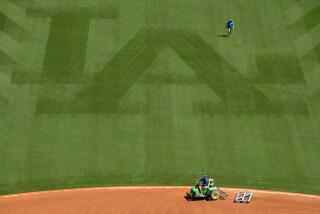Why it takes so long for MLB to change rules: Battle between tradition and innovation
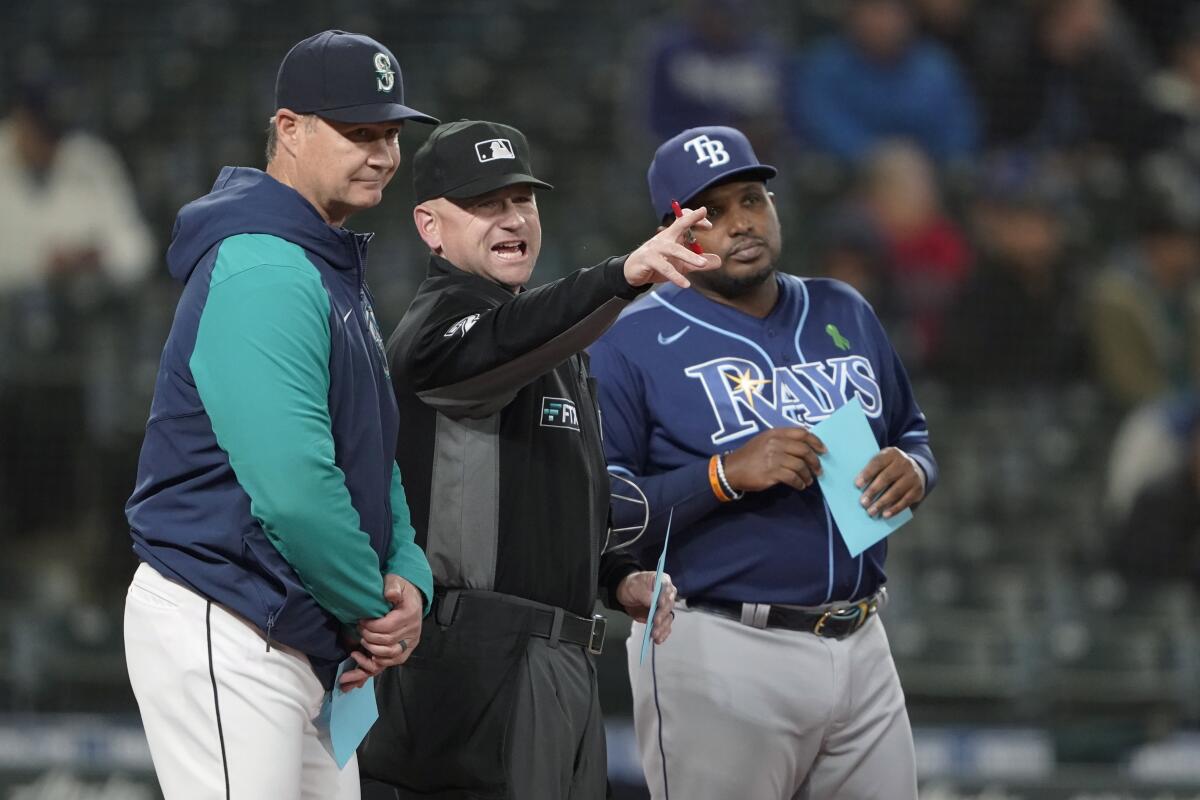
- Share via
It doesn’t take long for Blake Treinen to express his feelings about rule changes in baseball. The Dodgers pitcher, standing in front of his locker on a spring afternoon, says: “I’ll keep it real short and simple.”
Trash is the word he uses for the universal designated hitter and the extra-innings “ghost runner.” Same for talk of adding a pitch clock and restricting defensive shifts.
“When my kids grow up,” Treinen says, “I want to teach them the same game I grew up playing.”
The Savannah Bananas have thrown out every boring baseball rule, attracting thousands of fans. This is why Banana Ball has MLB’s attention.
This absolutist stance is hardly unique in a sport that calls itself “America’s pastime” and has long anchored its brand to tradition. But there are sound arguments and growing support for Major League Baseball’s current eagerness to tinker with the rule book.
MLB executives aren’t planning anything as extreme as the experiment that the minor-league Savannah Bananas conducted during a recent barnstorming tour that drew sold-out crowds. They will not be adopting “Banana Ball” rules that, among other things, outlaw bunts or call batters out when fans catch a foul ball.
But with base hits trending downward and games stretching well past three hours, the league is open to gentler adjustments. Morgan Sword, executive vice president for baseball operations, touts “a new process for considering and implementing rule changes where we can work collaboratively with our players and act faster to improve the game for fans.”
Former minor-league pitcher Mike Brady, who now teaches marketing at Florida State, suggests baseball has no choice.
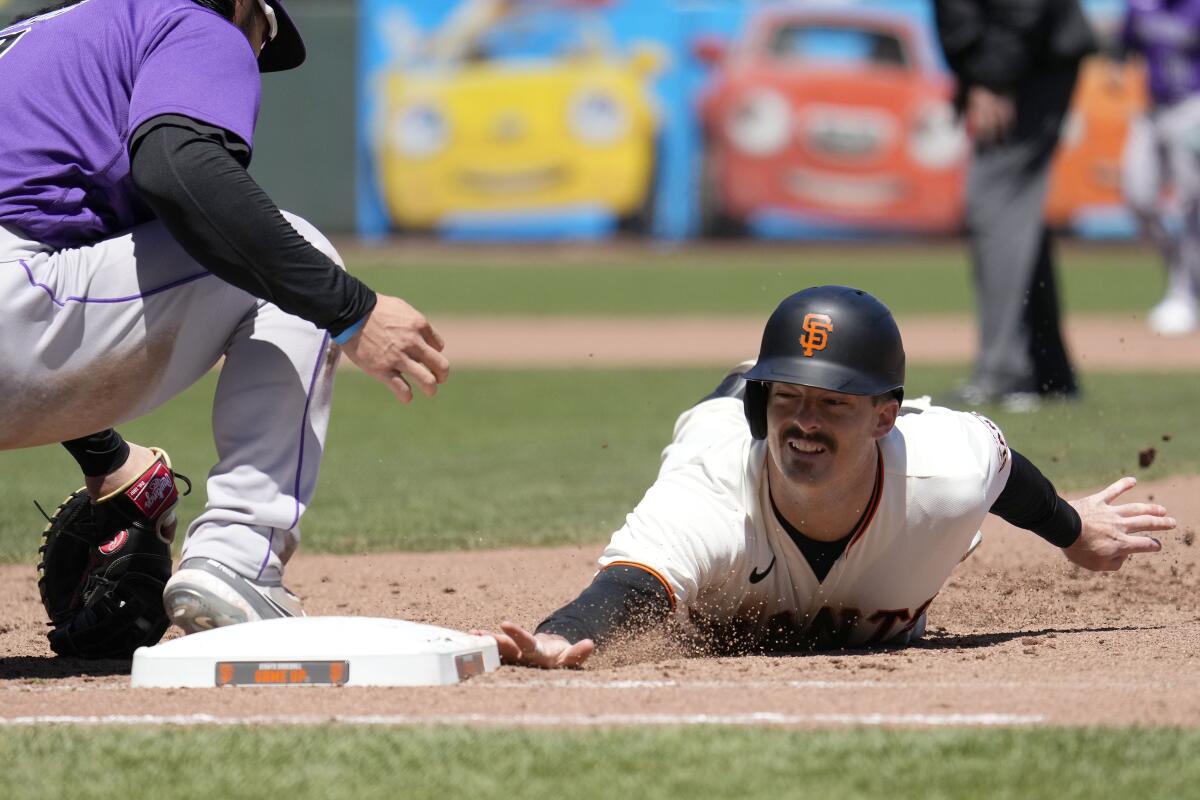
“My generation and older grew up with the tagline that this is America’s pastime,” he says. “Certainly, younger people don’t view it the same way.”
As baseball’s official historian, John Thorn counts himself among the those who welcome a revamp. When people talk about preserving the sanctity of the game, he begs to differ.
“There will always be fans who claim baseball hasn’t changed in 150 years so why change now?” Thorn says. “This is anti-historical.”
In the 1890s, league officials shifted the mound back more than 10 feet — to its current 60 feet 6 inches from the plate — in hopes of giving hitters a better look at the ball.
Subsequent adjustments included banishing the spitball, adopting a smaller armpit-to-knee strike zone and adding the DH to American League play. There have been defensive-minded changes too, with foul balls counting as strikes and minimum field dimensions of 325-400-325 feet.
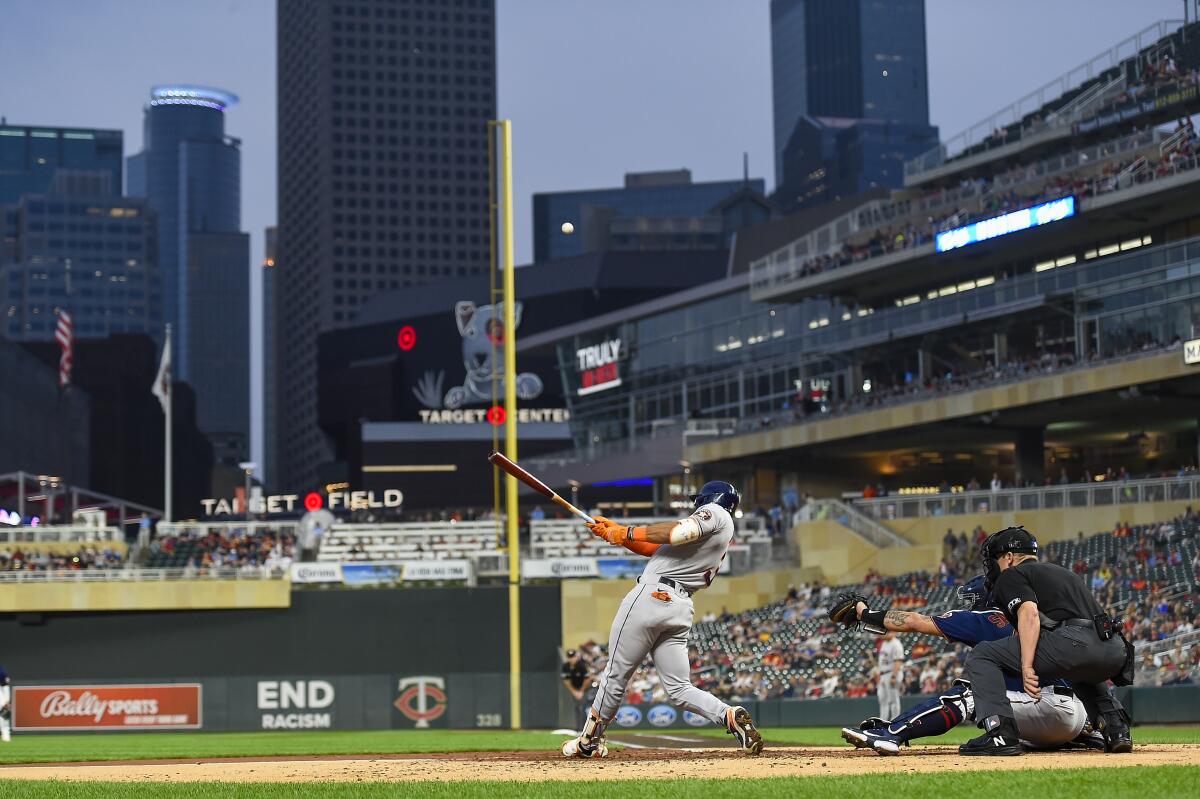
Now the game is facing another set of revisions amid concern about home runs and strikeouts overshadowing base hits and defensive play.
“Historically, I think the game was a little crisper the way it moved along; it had a little more action in it, more frequent balls in play, and getting back to that form of baseball would be an improvement,” Commissioner Rob Manfred told ESPN.
Minor league baseball is testing modifications this season, with the pitch clock reportedly trimming 20 minutes off games without effecting offensive output. The clock, along with a ban on defensive shifts and an automated strike zone, could be headed to the majors soon.
At a recent Dodgers game, even fans who describe themselves as traditionalists seemed open to adjustments. Sitting behind home plate in a blue cap and Justin Turner jersey, Michael Anaya said: “If the game is evolving, that’s a good thing.”
The NFL is proof that change can work, says Tom Zeiler, a University of Colorado professor who teaches sports history. The league adapted its rules over the years because owners “understood fully that they were in the entertainment business.”
As early as 1940, an NFL rules committee stated that football “should provide a maximum of entertainment” which could be measured by “the number of plays per game of a type that will be pleasing to the audience.”
This approach facilitated legalizing the forward pass and creating a sudden-death overtime. It gave receivers more room to run with the five-yard “chuck” rule. The mundane extra point got a jump-start with two-point conversions and kicks moved back to the 15-yard-line.
Making the game faster, Zeiler says, befits “a more fast-paced American society and fast-paced communications.”
Basketball adopted the shot clock, the three-point shot and stricter rules on hand-checking. Hockey established the icing penalty to speed up games and instituted three-on-three play for overtime. Soccer similarly adjusted its offsides rule and disallowed back passes to the goalkeeper to boost scoring.
So where does that leave baseball? Probably with lots of arguments over the next few seasons.
Dodgers catcher Will Smith doesn’t mind the pitch clock but isn’t so sure about the automated strike zone; he worries that computers will do away with the art of framing a pitch.
As a fan, Matt Riley thinks it looks funny when three infielders shift to one side of second base, so he likes the proposed ban but hates the “ghost runner.” Former All-Star Hunter Pence, now a television commentator, also has mixed emotions.
“Am I an advocate for changing everything? No,” he says. “Only if changes make the game better.”
Brady, the marketing professor, does not see adopting new rules as too risky.
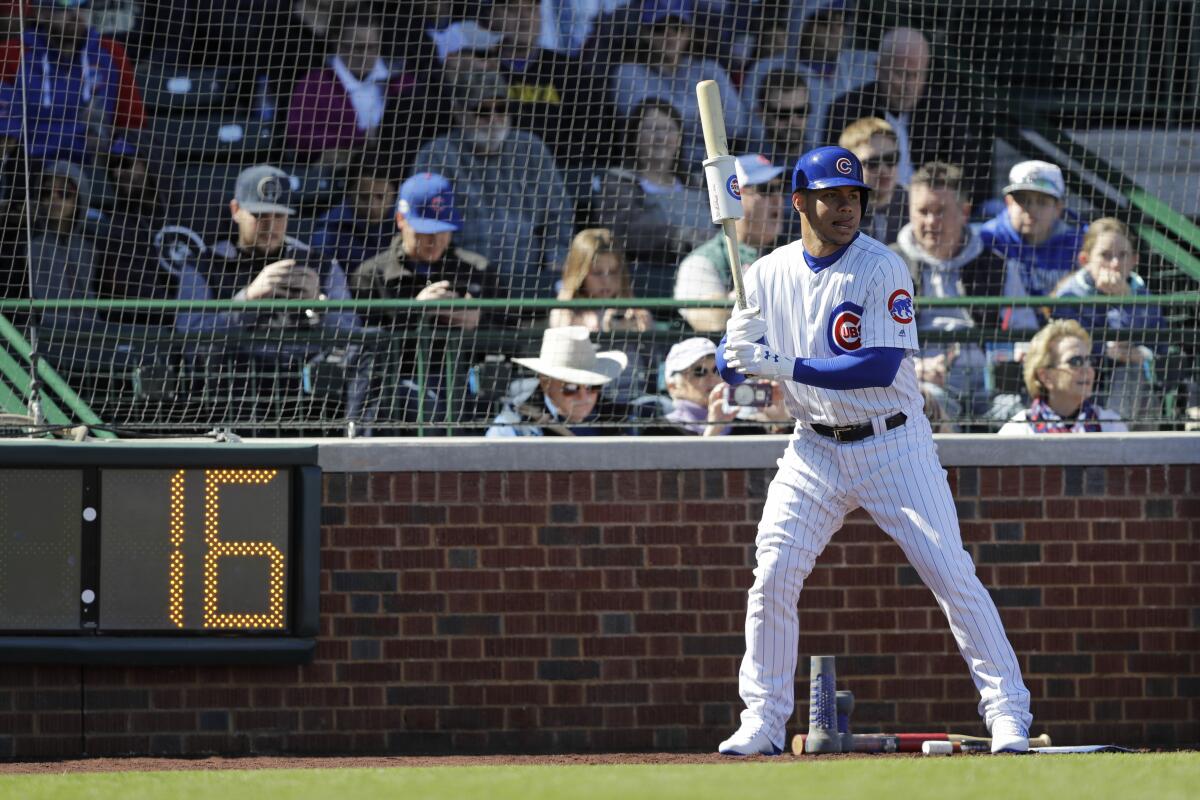
In the 1990s, Major League Soccer tested a countdown clock for each half and an overtime shootout in which players started 35 yards from goal and had five seconds to dribble and shoot. The rules proved unpopular and were soon dropped.
“I don’t think fans have such a long memory,” Brady said. “By and large, they forget after a relatively short period of time.”
In Georgia, the owner of the Savannah Bananas scrutinized every moment of a standard baseball game. In addition to changing foul balls and bunting, Jesse Cole set a two-hour time limit, outlawed visits to the mound and created a kind of sudden-death overtime where the defense has only a pitcher, catcher and a fielder; if the batter puts the ball in play, he must try to score before the ball is thrown home.
This wild experiment has generated ESPN-worthy highlights and viral posts on social media, transforming his small-town club into a national brand.
“We lose traditional baseball fans every single day,” Cole says. “But a lot of people want to see us play.”
MLB executives are hoping to thread the needle, retaining established fans while attracting new ones, if by less-excessive measures. As for the purists who scoff, Thorn offers a theory about why they insist on leaving the sport untouched.
“What they’re saying is they don’t want to grow old; they don’t want to fade from the scene,” the historian said. “But the game always has to change.”
Staff writer Bill Shaikin contributed to this report.
More to Read
Go beyond the scoreboard
Get the latest on L.A.'s teams in the daily Sports Report newsletter.
You may occasionally receive promotional content from the Los Angeles Times.

